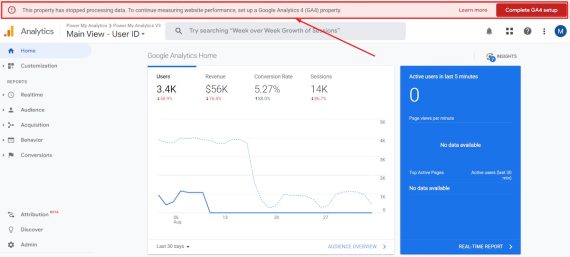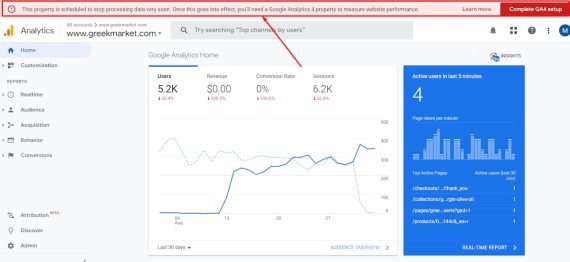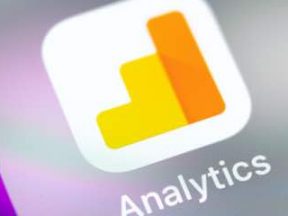Universal Analytics has sunset for most users, and most have transitioned to Google Analytics 4. In this post, I’ll address recent GA4 updates, post-transition tips, and options for retaining historical Universal Analytics data.
Universal Analytics Sunsetting
Nearly all Universal Analytics (UA) installs have stopped collecting and reporting new data. Google’s original sunset date was July 1, 2023, but the company opted to phase the shutdown versus a hard stop.
UA users should see a notification on that platform saying the property has stopped processing data.

UA users should see a notification stating, “This property has stopped processing data. To continue measuring website performance, set up a Google Analytics (GA4) property.” Click image to enlarge.
A few could see a notification of a scheduled stop.

Some UA users will see a notification of an upcoming stop: “This property is scheduled to stop processing data very soon. Once this goes into effect, you’ll need a Google Analytics 4 property to measure performance.” Click image to enlarge.
Where UA has stopped processing, all graphs will show 0 with no data going forward. To continue receiving analytics info, create a GA4 property.
Otherwise:
- Use a non-Google analytics platform, which many have done owing to Google’s clumsy UA-to-GA4 transition.
- Do nothing and lose essential visibility into website traffic, engagement, and conversions — not an option for any serious ecommerce merchant.
The easiest and most cost-effective option is to set up a GA4 property and continue using the powerful analytics platform for your website or app. GA4 is free, after all. Google provides links in UA report headers to instructions — see images above.
A GA4 property will likely last for years. Universal Analytics launched in 2005 and ended in 2023 — 18 years. My online store, Greek Market, has a UA-31848 Property ID (the 31,848th UA install) commencing in October 2005.
Archiving UA Data
UA data will be unavailable for users and Google APIs after June 30, 2024, per Google. UA reports will disappear then.
To retain UA history, archive the data where it’s easily accessible — to compare current traffic, engagement, and conversion info.
The easiest and quickest archive option is to export key reports manually. Export formats on UA are:
- PDF,
- Google Sheets,
- Excel,
- CSV.
Otherwise, use:
- The Google Sheets add-on to export and archive your data. Google’s “Analytics Help” explains how.
- A third-party service to move the data to Google Sheets, Excel, or a data warehouse, such as BigQuery.
Combining UA and GA4 Data
Combining UA and GA4 data for a continuous history is challenging. Certain metrics are compatible between the two platforms. Another Analytics Help post addresses what can and cannot be compared.
My GA4 transition checklist can help with combing the data and ensuring GA4 is reporting accurately. The list includes a link to Looker Studio to compare UA and GA4 data and identify glitches.
Google Analytics is going through its most significant evolution to date. The migration from UA to GA4 is not automatic — users must act. But the GA4’s value is tremendous. And it’s free.






